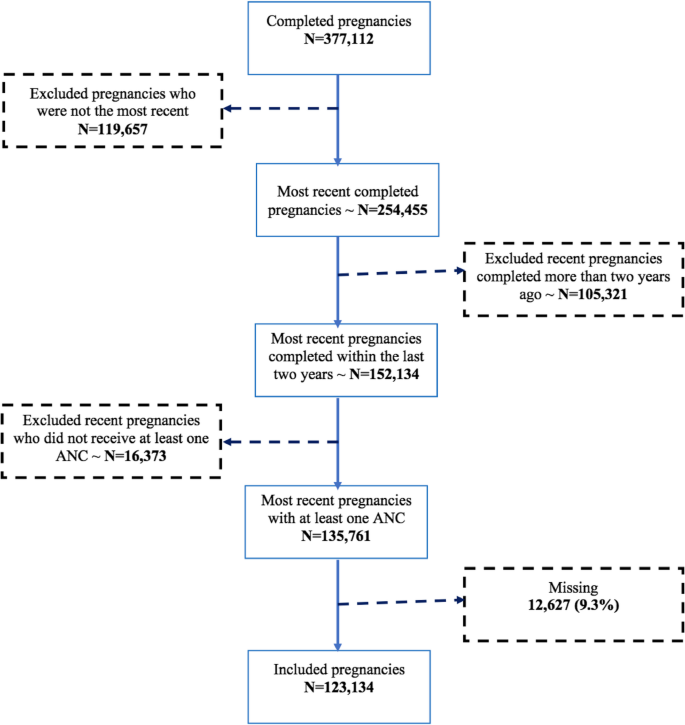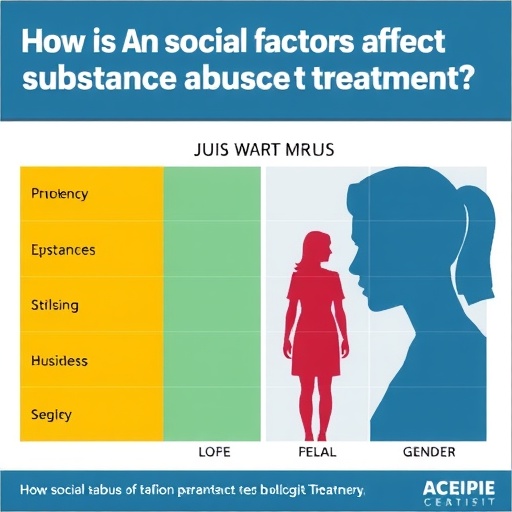Methodology Report: Analyzing Antenatal Care Initiation in Sub-Saharan Africa in the Context of Sustainable Development Goals
1.0 Data Sourcing and its Relevance to SDG 17
This study utilizes data integral to monitoring progress towards the Sustainable Development Goals (SDGs), particularly SDG 3 (Good Health and Well-being). The data were sourced from the Demographic and Health Surveys (DHS), a nationally representative data collection effort conducted in thirty-six sub-Saharan African countries between 2007 and 2019. The DHS program represents a critical partnership for data (SDG 17), providing high-quality information on demographic and health indicators necessary for evidence-based policymaking. The specific focus on Antenatal Care (ANC) attendance among women of reproductive age (15–49 years) directly supports the evaluation of Target 3.1 (reduce maternal mortality) and Target 3.7 (ensure universal access to sexual and reproductive health-care services). Data were officially acquired from the MEASURE DHS program on February 1, 2021.
2.0 Study Sample Selection and Focus on SDG 3
To align with the objectives of SDG 3, the study sample was meticulously defined to analyze the most recent maternal health-seeking behaviors. The selection process involved several stages:
- Initial Pool: After pooling data from the thirty-six countries, an initial set of 377,112 pregnancies that occurred within the five years preceding the surveys was identified.
- Exclusion Criteria:
- 119,657 pregnancies were excluded as they were not the most recent.
- 105,321 pregnancies were excluded for being completed more than two years before the survey.
- 16,373 pregnancies were excluded because the mother received no ANC, focusing the analysis on the timing of initiation for those who did access care.
- Management of Missing Data: The dataset exhibited a low percentage of missing data (less than 10%). Consequently, a listwise deletion method was employed, which is considered a valid approach for data missing completely at random at this low level. This ensures the robustness of findings used to inform SDG-related health policies.
- Final Sample: The final analysis was based on a sample of 123,134 completed pregnancies with complete data on all variables, providing a substantial basis for examining factors influencing ANC initiation across sub-Saharan Africa.
3.0 Variable Definition and Alignment with SDGs
The variables were selected to reflect the multi-faceted determinants of health outcomes, aligning with the interconnected nature of the SDGs.
3.1 Dependent Variable
The outcome variable is the timing of the first ANC visit, measured in months (ranging from 1 to 9). This variable is a direct indicator of progress towards SDG Target 3.7, as timely initiation of ANC is crucial for ensuring effective maternal healthcare and reducing maternal mortality (SDG Target 3.1).
3.2 Independent Variables: A Multi-SDG Perspective
Predictor variables were categorized based on an adaptation of the Andersen behavioral model and reflect key socio-economic and demographic factors that intersect with multiple SDGs.
- Environmental Factors: Place of residence (urban/rural) and country/sub-region are analyzed to understand geographic disparities, a key component of SDG 10 (Reduced Inequalities).
- Predisposing Characteristics: These variables highlight the influence of social structures on health access.
- Respondent’s age, marital status, and occupation.
- Highest level of education (woman and partner): This directly links the study to SDG 4 (Quality Education) and SDG 5 (Gender Equality), as education is a key enabler of health literacy and empowerment.
- Mass media exposure: Measures access to information, which can empower individuals to make informed health decisions.
- Enabling Factors: These factors relate to the resources available to individuals to access healthcare.
- Household wealth quintile: This variable is critical for assessing the impact of economic status on healthcare access, directly addressing SDG 1 (No Poverty) and SDG 10 (Reduced Inequalities).
- Women’s participation in household decision-making: This is a powerful indicator of female autonomy and is central to achieving SDG 5 (Gender Equality).
- Need Factors: These variables reflect the perceived need for care.
- Desire for pregnancy and number of births: These factors are linked to reproductive rights and family planning, which are core components of SDG Target 3.7 and SDG Target 5.6.
- History of a terminated pregnancy.
A multicollinearity test was performed to ensure model integrity, leading to the development of an alternative model to assess the impact of sub-regional variations without compromising statistical validity.
4.0 Analytical Strategy for Evidence-Based Policy
The analytical strategy was designed to produce robust evidence to inform policies aimed at achieving the SDGs. The process involved several steps to ensure the validity and reliability of the findings.
- Descriptive Analysis: Percentage distributions and Pearson chi-square tests were used to describe the study sample and assess initial associations.
- Survival Analysis: Kaplan-Meier survivor curves were generated to visualize the timing of ANC initiation across different covariate groups. The log-rank test was used to assess the statistical significance of these differences.
- Multivariate Modeling: After determining that a conventional one-level regression model was more appropriate than a multilevel model (ICC = 0.0063), discrete-time logit models were employed. This event history analysis technique examines the adjusted effects of covariates on the timing of the first ANC visit without requiring an assumption of proportional hazards.
- Weighting and Software: Data were weighted to ensure findings are generalizable to women of reproductive age in the respective countries. All statistical analyses were conducted using R, employing a suite of specialized packages for survival analysis, survey data analysis, and data visualization. This rigorous analytical approach supports the development of effective and accountable institutions (SDG 16) by providing reliable data for health programming.
Analysis of Sustainable Development Goals in the Article
1. Which SDGs are addressed or connected to the issues highlighted in the article?
The article on Antenatal Care (ANC) in sub-Saharan Africa connects to several Sustainable Development Goals (SDGs) by examining the factors that influence women’s access to and utilization of essential maternal healthcare services.
-
SDG 3: Good Health and Well-being
This is the most central SDG to the article. The study’s focus on “reproductive health such as ANC attendance among women of reproductive age (15–49 years)” directly relates to ensuring healthy lives and promoting well-being. ANC is a critical intervention for improving maternal and newborn health outcomes.
-
SDG 5: Gender Equality
The article addresses gender equality by investigating how women’s empowerment and social status affect their healthcare access. It explicitly considers variables like “women’s autonomy,” “female education,” and “women’s participation in the household’s decision-making process” as key factors influencing ANC initiation.
-
SDG 10: Reduced Inequalities
The study is fundamentally an analysis of inequality in healthcare access. It examines how disparities based on socioeconomic and geographic factors impact ANC utilization. The article highlights that “ANC coverage are lower among women from households belonging to the poor wealth quintile” and “women living in rural areas,” directly addressing the goal of reducing inequalities within and among countries.
-
SDG 4: Quality Education
The article establishes a strong link between education and health outcomes. It repeatedly mentions that “female education” and “partner’s level of education” are significant predictors of ANC service utilization, underscoring the role of quality education in empowering individuals to make informed health decisions.
2. What specific targets under those SDGs can be identified based on the article’s content?
Based on the issues discussed, several specific SDG targets can be identified:
-
Target 3.1: Reduce maternal mortality
By 2030, reduce the global maternal mortality ratio to less than 70 per 100,000 live births. The article’s entire focus on understanding the “timing of the first ANC visit” is crucial because timely and adequate antenatal care is a primary strategy for preventing maternal deaths.
-
Target 3.7: Universal access to sexual and reproductive health-care services
By 2030, ensure universal access to sexual and reproductive health-care services. The study analyzes the utilization of ANC, which is a core component of reproductive healthcare. It also refers to “unmet reproductive health needs among women,” directly aligning with the objective of this target.
-
Target 5.6: Ensure universal access to sexual and reproductive health and reproductive rights
The article’s examination of “women’s participation in the household’s decision-making process” and the “desire for pregnancy (wanted then, wanted later, wanted no more)” relates to a woman’s ability to exercise her reproductive rights and make decisions about her own body and health, which is central to this target.
-
Target 10.2: Promote universal social, economic, and political inclusion
By 2030, empower and promote the social, economic, and political inclusion of all, irrespective of age, sex, disability, race, ethnicity, origin, religion or economic or other status. The study’s analysis of how “household wealth quintile,” “place of residence (urban or rural),” and “level of education” create barriers to ANC access is a direct investigation of the inequalities that this target aims to eliminate.
-
Target 4.5: Eliminate gender disparities in education and ensure equal access
By 2030, eliminate gender disparities in education and ensure equal access to all levels of education. The article provides evidence for the importance of this target by showing that a lack of “female education” is a key barrier to accessing maternal healthcare, demonstrating the cascading effect of educational inequality on health and well-being.
3. Are there any indicators mentioned or implied in the article that can be used to measure progress towards the identified targets?
Yes, the article explicitly uses or implies several indicators that align with the official SDG monitoring framework. These are the variables collected by the Demographic and Health Survey (DHS) and used in the study’s analysis.
-
Indicators for SDG 3 (Targets 3.1 & 3.7)
- ANC attendance: The study’s primary focus is on women who “made at least one ANC visit.” The proportion of pregnant women receiving at least one ANC visit is a key indicator for maternal healthcare coverage.
- Timing of first ANC visit: The outcome variable is defined as the “duration before the event of the first ANC attendance,” measured in months. This measures the timeliness of care, which is critical for its effectiveness.
-
Indicators for SDG 5 (Target 5.6)
- Women’s participation in decision-making: The study uses a specific variable for “women’s participation in the household’s decision-making process,” which is coded based on the number of decisions a woman is involved in. This directly measures women’s autonomy.
- Need for family planning: The variable “desire for pregnancy (wanted then, wanted later, wanted no more)” serves as a proxy indicator for access to and use of family planning, reflecting whether a pregnancy was intended.
-
Indicators for SDG 10 (Target 10.2)
- Household wealth quintile: This is used as a primary independent variable to measure economic inequality and its impact on healthcare access.
- Place of residence (urban or rural): This variable is used to analyze geographic disparities in the utilization of ANC services.
-
Indicator for SDG 4 (Target 4.5)
- Highest level of education: The study includes the “highest level of education” for both the woman and her partner as predisposing characteristics, allowing for an analysis of how educational attainment affects health-seeking behavior.
4. Table of SDGs, Targets, and Indicators
| SDGs | Targets | Indicators Identified in the Article |
|---|---|---|
| SDG 3: Good Health and Well-being | 3.1: Reduce maternal mortality. 3.7: Ensure universal access to sexual and reproductive health-care services. |
|
| SDG 5: Gender Equality | 5.6: Ensure universal access to sexual and reproductive health and reproductive rights. |
|
| SDG 10: Reduced Inequalities | 10.2: Empower and promote the social, economic and political inclusion of all. |
|
| SDG 4: Quality Education | 4.5: Eliminate gender disparities in education and ensure equal access. |
|
Source: reproductive-health-journal.biomedcentral.com






